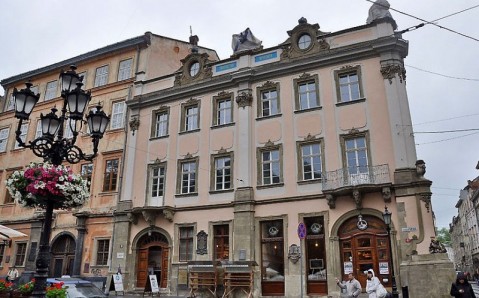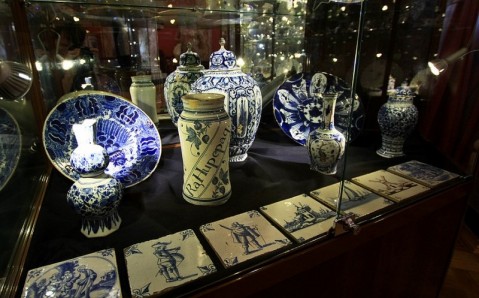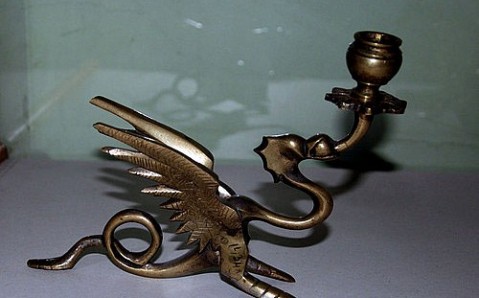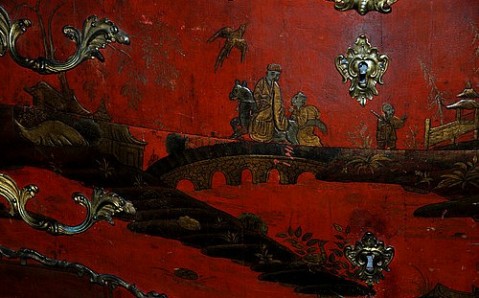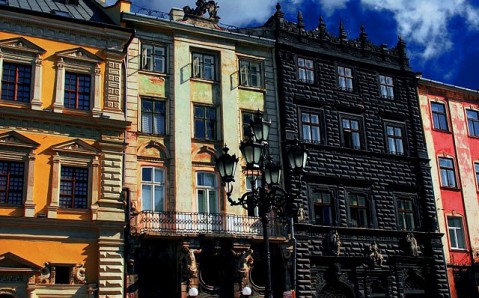Lubomirski Palace (Furniture and China Museum)
Rynok Sq. 10
The building of the former Lubomirski Palace is one of the many gems of Rynok Square’s splendid ensemble. Reckoned among the best baroque secular buildings in Lviv, it is rightly considered to be the most valuable monument of architecture of the 18th century. Currently the ancient palace hosts the Furniture and China Museum’s exposition.
The first building appeared here in the 17th century. It was built for Lithuanian Count Sapega on the place of several Gothic kamenitsas that used to stand here. However, in 1763, the palace was rebuilt after the project of the famous European architect Jan de Witte for the Polish princely family Lubomirski. After reconstruction, the building acquired baroque look. The traits of this luxurious style were most vividly embodied in palace’s gala facade, which overlooks the Rynok Square. Two other visible facades, one of which faces the Russkaya Street, and the other faces the Fedorova Street, have much simpler design.
After partition of Poland in the late 18th century, the residence of Austrian governors of Galicia was situated in the Lubomirski Palace, and a hundred years later, it was bought by non-government organization ‘Prosvita,’ founded in Kyiv. It placed several cultural and educational institutions there, having turned the former palace into important center of Ukrainian culture. In 1975, the building was adapted to house the exposition of the Furniture and China Museum, which remains there until now.
Collections of antique European and Ukrainian furniture, decorative metal, and porcelain and earthenware, dated to the 16th – 20th centuries, are exhibited in the palace. The ground floor numbers 13 halls, where furniture, typical for Renaissance Italian houses, is shown. Exposition’s heart is luxury chests Cassone, common in those days, and unusually designed cabinets. Old chests of drawers and bureaus, made in the Rococo style, are especially interesting.
Museum’s true pride, however, is its valuable collection of West European industrial ceramics, situated on the museum’s first floor. Most items are dated to the 18th – early 20th centuries. These are real masterpieces, produced by the best manufactories of the Old World – Meissen, Vienna, Berlin, Copenhagen – as well as of China and Japan. Dining and tea and coffee ware, incense-burners, writing sets and snuffboxes are among them. In addition, there is a collection of Ukrainian porcelain (18th – 20th centuries), whose most valuable exhibits are products of the first Ukrainian porcelain factories.
The second floor is occupied by the very interesting collection of decorative metal: skillfully made chests, safes, locks, bells, decorative plates, created by talented European craftsmen. Two rare exhibitions are located in adjacent rooms: ‘Galicia Ancient Stone Tiles,’ featuring unique specimens from the collection of the restorer and artist Peter Lininsky, and the exposition of original works by authentic Ukrainian master of artistic painting on glass Ivan Skolozdra.

 Western
Western
